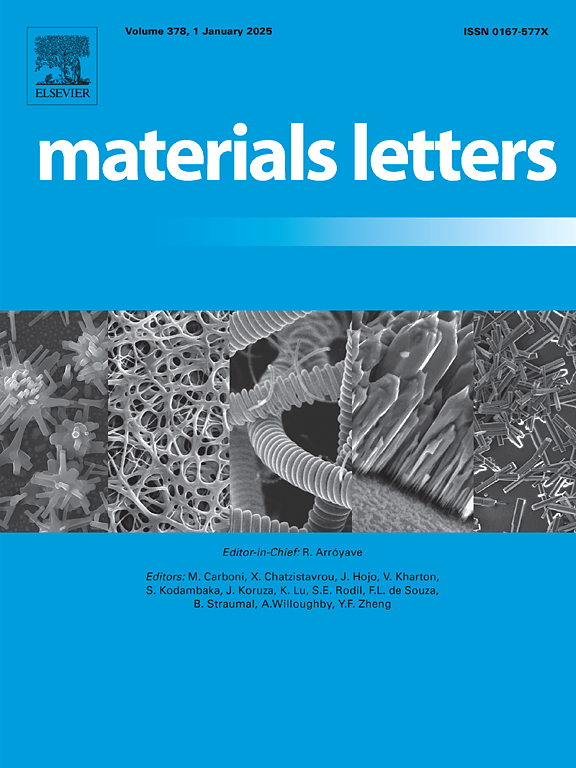电催化5-羟甲基糠醛氧化的含氮芳香环有机材料
IF 2.7
4区 材料科学
Q3 MATERIALS SCIENCE, MULTIDISCIPLINARY
引用次数: 0
摘要
生物质废弃物的升级利用一直是环境保护的永恒话题。从废弃作物中提取的5-羟甲基糠醛(HMF)可氧化为2,5 -呋喃二羧酸(FDCA),是一种高附加值的化学物质,但电催化剂尚未得到解决。本文合成了一种无金属电催化剂C42H26N12 NAR,并通过电催化HMF氧化反应(e-HMFOR)成功地将HMF转化为FDCA,同时在10 mA cm−2下将总水分解电压降低至1.24 V。此外,C42H26N12 NAR在1 M KOH + 0.1 M HMF中表现出良好的稳定性。本研究为设计e-HMFOR生成FDCA的碳基电催化剂提供了一种简便的策略。本文章由计算机程序翻译,如有差异,请以英文原文为准。
Nitrogen-containing aromatic ring organic materials for electrocatalytic 5-hydroxymethylfurfural oxidation
Biomass waste upcycling has been always an eternal topic for environmental protection. 5-hydroxymethylfurfural (HMF) derived from wasted crops can be oxidized as 2, 5-furandicarboxylic acid (FDCA) that is a high-value-added chemical, but the electrocatalyst still remains unsolved. Herein, a metal-free electrocatalyst C42H26N12 NAR was synthesized and successfully converted HMF to FDCA through electrocatalytic HMF oxidative reaction (e-HMFOR), meanwhile reducing the overall water splitting voltage as only 1.24 V at 10 mA cm−2. Besides, the C42H26N12 NAR exhibits good stability in 1 M KOH + 0.1 M HMF. This study provides a facile strategy to design carbon-based electrocatalyst for e-HMFOR to generate FDCA.
求助全文
通过发布文献求助,成功后即可免费获取论文全文。
去求助
来源期刊

Materials Letters
工程技术-材料科学:综合
CiteScore
5.60
自引率
3.30%
发文量
1948
审稿时长
50 days
期刊介绍:
Materials Letters has an open access mirror journal Materials Letters: X, sharing the same aims and scope, editorial team, submission system and rigorous peer review.
Materials Letters is dedicated to publishing novel, cutting edge reports of broad interest to the materials community. The journal provides a forum for materials scientists and engineers, physicists, and chemists to rapidly communicate on the most important topics in the field of materials.
Contributions include, but are not limited to, a variety of topics such as:
• Materials - Metals and alloys, amorphous solids, ceramics, composites, polymers, semiconductors
• Applications - Structural, opto-electronic, magnetic, medical, MEMS, sensors, smart
• Characterization - Analytical, microscopy, scanning probes, nanoscopic, optical, electrical, magnetic, acoustic, spectroscopic, diffraction
• Novel Materials - Micro and nanostructures (nanowires, nanotubes, nanoparticles), nanocomposites, thin films, superlattices, quantum dots.
• Processing - Crystal growth, thin film processing, sol-gel processing, mechanical processing, assembly, nanocrystalline processing.
• Properties - Mechanical, magnetic, optical, electrical, ferroelectric, thermal, interfacial, transport, thermodynamic
• Synthesis - Quenching, solid state, solidification, solution synthesis, vapor deposition, high pressure, explosive
 求助内容:
求助内容: 应助结果提醒方式:
应助结果提醒方式:


